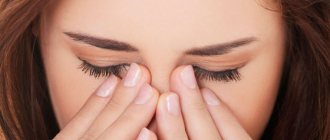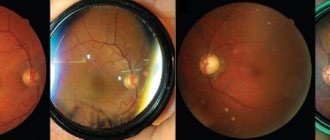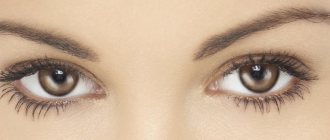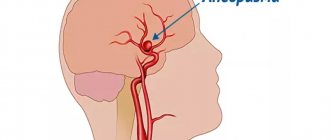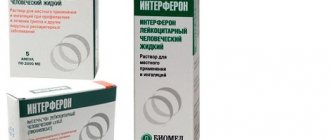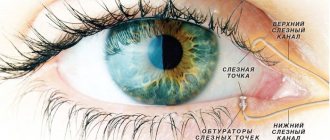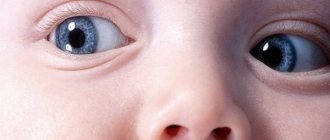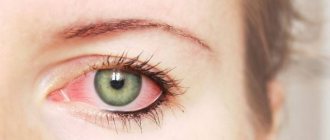Eyelashes are the main attribute of both female and male attractiveness. But their main function is to protect the eyes from mechanical damage and pollution. The life cycle of each eyelash is about 3 months. On the upper eyelid there are about two hundred of them and the length of each can reach 1.3 cm. The lower eyelashes are much shorter (up to 0.7 cm) and their number is half as much.
In some cases, eyebrows and eyelashes begin to itch, discomfort, irritation, swelling, dryness and other unpleasant symptoms appear, which may indicate the presence of ophthalmological or dermatological diseases. Constant itching leads to the fact that a person rubs his eyes with his hands. This causes mechanical damage and hair breakage. Why does this happen and what should I do?
How to get rid of itchy eyes?
When the cause of itchy eyes is determined, the doctor prescribes treatment. It is carried out comprehensively, including the use of drops, ointments, and folk remedies. Your doctor can best advise you on how to relieve itchy eyes.
Drug therapy
Which drops to instill depends on the cause of the pathology. Ophthalmologists use a large number of drugs that help with various diseases.
- With antibacterial effect. Prescribed for the treatment of conjunctivitis, post-traumatic conditions, blepharitis, stye. Use drops “Normax”, “Oftaquix”, “Azidrop”. Among the ointments, “Tetracycline” and “Erythromycin” are effective.
- Antiviral. Indicated for viral conjunctivitis. Drops of “Ophthalmoferon” and “Poludan” are used.
- Antihistamine eye drops are prescribed for itching caused by an allergic reaction. Apply drops “Lecrolin”, “Allergodil”, “Cromohexal”. They are used to treat and prevent seasonal allergies.
- Hormonal drugs are indicated for the treatment of chronic inflammation and severe manifestations of allergies. Dexamethasone and Prednisolone drops are effective.
- Moisturizers are used to treat dryness. These include “Systane”, “Natural tear”.
- Healing drugs. Help restore damaged mucous membranes. These include “Korneregel”, “Solcoseryl”.
- Vasoconstrictors relieve swelling - “Vizin”, “Visoptik”.
- For demodicosis, sulfur ointment or Demalan cream is prescribed.
- The most popular and effective remedies for dry and itchy eyes are tear drops:
- Cationorm is a cationic emulsion for severe dryness and itching of the eyes, which manifests itself in the morning and throughout the day. Quickly relieves symptoms, restores all three layers of the tear film and prevents the development of the syndrome. Does not contain preservatives and is used in conjunction with contact lenses.
- Ocutiarz - eye moisturizing drops based on ultra-high molecular weight hyaluronic acid, for occasional dryness and itching of the eyes that appear after prolonged visual stress. Does not contain preservatives, also used on contact lenses. Often prescribed to relieve discomfort after ophthalmic surgery.
- Oftagel is an eye gel with carbomer in maximum concentration, moisturizes for the longest time, eliminates itching and lacrimation. The advantage of the gel is that it can be used once a day; if it is not possible to instill drops during the day, the eyes will be moisturized all day.
The same medications are used for adults and children. For flaking of the skin around the eyes, moisturizing or nourishing creams are used. A dermatologist may prescribe special medications for psoriasis or eczema.
You can watch a more detailed description of the symptom of itchy eyes and treatment in the following video:
Folk remedies
Experts in traditional medicine will tell you what to do if your eyes itch. Folk remedies are used as an auxiliary treatment.
- Lotions and compresses made from chamomile infusion. The plant soothes inflamed skin. Chamomile flowers are poured with boiling water and allowed to brew. Then moisten gauze wipes and apply to the eyes for 10-15 minutes.
- Cucumber or raw potatoes are cut into circles and applied to the eyelids for half an hour.
- Tea compresses. Brew strong tea, moisten cotton pads with tea leaves, and place on eyelids.
- Wipe the skin with frozen parsley juice. It reduces swelling and inflammation, making the eyelids itchy less.
- Aloe juice is used for rubbing and lotions.
Treatment with folk remedies is discussed with a doctor. It is impossible to treat eye diseases only at home on your own - the risk of complications is high.
Antiallergic drops
Allergies cause itching in the eyes, swelling, and watery eyes. To eliminate these and other symptoms, doctors recommend the use of specialized anti-allergy drops. Among them:
- "Opatanol" - drops based on a solution of olopatadine, which is considered one of the most powerful antihistamines. The product is highly effective for allergic conjunctivitis and acts for quite a long time. This medicine is suitable for long-term use.
- "Allergodil" is a product based on the active element azelastine. It is considered an “urgent” medicine, since it very quickly relieves redness, swelling, hyperthermia of the eyelids, relieves itching and signs of “dry eyes”. It can be used for a long time, but only under the supervision of a specialist.
- "Ketotifen" - eye drops with clenbuterol hypochloride. This compound strengthens the mucous membrane, normalizes the composition of tears, promotes tissue restoration, blocks mast cells and relieves symptoms of allergies.
We looked at the causes and treatment of itching in the corners of the eyes.
How is demodicosis treated?
Treatment of demodicosis of the eyelids is divided into 2 stages - antiparasitic, anti-inflammatory therapy and a set of hygiene procedures. Note! Recently, a number of doctors have taken the view that demodicosis is a contact disease and that it is transmitted within the family - therefore, it is important that even in the absence of symptoms, eyelid hygiene is observed not only by the patient, but also by his relatives living with him under the same roof.
The eyelid hygiene complex includes three stages: cleansing the surface of the eyelids, warm compresses, and self-massage of the eyelids.
Why do my eyes itch?
The eyes are one of the most important organs of a person, with the help of which he receives incoming information, which is further processed by the brain. The appearance of an illness accompanied by a condition in which the eyelids itch raises the question: why do the eyelids itch and what to do to restore health? There are many reasons why your eyelids itch. These include:
- constant sitting in front of a computer monitor that is not protected by a special screen, in which dry eyelid syndrome occurs due to constant tension;
- eye reaction to allergic factors, which may include pollen, animal hair, new cosmetic or hygiene products, food products, medications;
- infectious processes in the body of viral or bacterial origin, conjunctivitis;
- exacerbation of chronic ailments;
- the initial stage of glaucoma or cataracts;
- reaction of the eyeballs to contact lenses and other artificial irritants.
Peeling on the eyelids
If both eyelids begin to peel and itch at the same time, dryness and irritation appear, then the cause may be an allergy. To get rid of these signs, you need to remember what new foods you ate over the last 2-3 days, what cosmetics you applied to your eyes. Perhaps this is a reaction to medications that have expired or caused such a side effect. If peeling of the eyes begins in a child, then a visit to an allergist is necessary: a series of tests will help determine what exactly the allergic reaction occurred to.
The upper eyelid is red, itchy and flaky
When a person has only one eyelid affected, while no pathological processes are noted on the other side, it is important to carefully notice developing symptoms so as not to “heal” the disease with the wrong means. If the eyelid itches, yellowish and white discharge constantly accumulates in the corner of the eye and on the eyelashes, then the following ailments may be the cause:
- conjunctivitis of any etiology;
- Graves' disease;
- demodicosis;
- herpes;
- barley;
- inflammation of the eyeball associated with penetration of infection beyond the orbital septum;
- entry of a foreign body that injures the mucous membranes, eye burn.
Lower eyelid itches
A situation where a person's lower eyelid itches and swells, accompanied by purulent discharge, can be caused by blepharitis. This common ailment, which can recur periodically, is caused by the following reasons:
- reduced immunity after suffering from colds;
- exacerbation of chronic eye diseases;
- diet poor in vitamins or microelements.
First, a person experiences slight swelling in the lower eyelid, accompanied by itching, then, if timely measures are not taken, scales form on the eyelid and lower eyelashes, leading to a decrease in the palpebral fissure due to an increase in the size of the eyelid. There is a sharp fatigue of the eyes, which are trying to function normally in such conditions, the patient simply gets tired of looking, he wants to close his eyelids all the time.
Burning
The burning sensation is not a disease, it is a symptom indicating problems in the eyes or throughout the body, so you need to try to understand the reasons why you feel pain and burning. It can be:
- pancreatic dysfunction and related diseases;
- prolonged eye strain associated with the need to constantly look intently in one direction;
- allergic processes;
- conjunctivitis;
- unsuitable lenses or glasses.
If the burning sensation is complicated by discharge from the eyes, itching, swelling, tearing, then these could be bacterial, viral or fungal infections, and this situation should not be left to chance under any circumstances. The disease is most easily treated in the initial stages, and not in advanced cases, when it is necessary to place the patient in a hospital for drug therapy and surgical intervention.
Eyelids swell
General fatigue, disruption of the daily routine, lack of sleep, and too dry air in the room cause constant swelling around the eyes. The person looks tired, with red, swollen eyelids, the palpebral fissure decreases, and it becomes difficult to look. A frosty wind blowing in the face can also be accompanied by swelling of the eyelids, however, such symptoms quickly disappear in a warm room. Insect bites can cause swelling of the eyelids until the palpebral fissures completely disappear.
Manifestations of diseases
It rarely happens that the organ of vision only itches, and there are no other manifestations. Even if this condition is not associated with a disease, there are accompanying symptoms that help make the diagnosis. Eye diseases usually manifest themselves with 3-4 symptoms at the same time.
Itching and watery eyes
This combination of symptoms is most typical of allergies. Lacrimation is a protective reaction that allows you to wash away irritating substances from the mucous membrane.
In addition, symptoms of allergies include sneezing and discharge of fluid from the nose. The severity of symptoms decreases sharply when a person stops contact with the allergen.
Increased tearing and a feeling as if there is sand in the eyes are characteristic of dry eye syndrome. This condition is caused by prolonged work with a computer, reading in poor lighting, and prolonged wearing of contact lenses.
Less commonly, lacrimation accompanies conjunctivitis, blepharitis, and can occur with a cold.
Itching and peeling
Itching around the eyes, accompanied by peeling and sticking of eyelashes, is a sign of demodicosis. This is a disease caused by microscopic mites. They settle in the eyelash follicle and secrete toxic substances that make the eyes itch.
If it itches, turns red and flakes around the eyes, this may be an allergic reaction to cosmetics. Peeling occurs with some skin diseases - dermatitis, eczema, psoriasis, lichen.
Internal itching
The feeling that the eyeball itches from the inside or in the corners of the nose occurs after visual strain. A person is bothered by dryness and burning.
In a patient with helminthiasis, internal discomfort is due to psychosomatics. It seems to a person that there are parasites inside the eyeball. Eyelids can itch in people with an unstable nervous system, due to stress and emotional tension.
Itching and redness
Burning, redness and itching in the eyes are caused by conjunctivitis. This is an inflammation of the mucous membrane, which can be caused by:
- viruses;
- bacteria;
- injury.
The disease is accompanied by swelling, the appearance of mucous or purulent discharge. The eyes are very itchy and painful.
When your eyes are very itchy and your eyelids are red, this is a sign of an allergy. Redness of the ciliary margin, combined with swelling, is observed with blepharitis. This is the name of bacterial inflammation caused by nonspecific flora.
The eyeballs itch due to their increased dryness. An unpleasant sensation bothers a person constantly, even at night. Redness does not appear on the mucous membrane, but on the sclera.
Feeling pain
When the eyeballs constantly itch and pain occurs, this is a sign of injury. A common cause is improper use of contact lenses.
Severe pain occurs against the background of the appearance of barley. The disease is associated with inflammation of the sebaceous gland on the eyelid. First, the skin turns red, then a slight swelling appears, surrounded by edema.
Pain and itching of the eyelids accompany conjunctivitis, blepharitis, and dacryocystitis. Pain is almost always caused by infectious inflammation.
Itching and swelling
If your eyelids itch in the morning and become swollen, this is a consequence of inadequate sleep. Swelling appears after exposure to strong winds, and tearing is also observed. The conditions pass quickly and are therefore not considered pathological.
Edema accompanies all inflammatory diseases. There is redness of the conjunctiva and discharge. Swelling of the eyelids can occur after injury.
Itches in the corner of the eyes
Discomfort in the inner or outer corner of the eye near the bridge of the nose is uncommon. It is associated with inflammation of the lacrimal sac or lacrimal glands - dacryocystitis or dacryoadenitis. Accompanied by swelling and bursting pain.
At the eyelash edge
When the eyes itch at the base of the eyelashes, the most likely cause is demodicosis. The mite that causes the disease attacks the eyelash follicles, causing them to fall out.
Itching of the upper and lower eyelids is caused by blepharitis. The inflammatory process always affects the ciliary region. Itching and redness on the eyelids appear after using low-quality decorative cosmetics.
Causes of itchy eyes
In addition to an allergic reaction, itchy eyes can occur for the following reasons:
- eye injury, resulting in cloudy cornea;
- dust particles getting into the eye;
- overexertion due to spending a long time at the computer or book;
- conjunctivitis caused by a fungal or bacterial infection;
- increased eye pressure;
- cataract;
- glaucoma;
- barley;
- inflammation of the cornea.
Each eye disease requires specific and separate treatment with eye medicine. Such drops are aimed at eliminating inflammation, destroying bacteria and relieving discomfort. They contain components that help constrict blood vessels, which will reduce itching, swelling and redness.
Itchy eyelids - causes and treatment
An unpleasant itching sensation can occur when the nerve endings of the eyelid or conjunctiva, the mucous membrane of the eyeball, are irritated. This may be accompanied by an unpleasant burning sensation, tearing, swelling, and swelling of the eyelid. Either one or both eyes may itch, often for no apparent reason.
Itchy eyes: causes, treatment
If you cannot independently determine the source of irritation, you should consult an ophthalmologist. There may be several causes of itchy eyes:
- Wearing lenses for too long, their size is incorrectly selected.
- Use of allergenic eye drops, reaction to certain oral medications.
- Getting dust, pollen, or animal hair into the eyes.
- Fatigue, eye strain.
- Using low quality cosmetics.
- Foreign body getting into the eye.
- Abscess, meibomitis, stye.
- Glaucoma, cataract.
- With a lack of fatty secretion of the tear film - dry eye syndrome.
- Demodicosis of the eyelids, conjunctivitis, trichiasis, allergic reaction.
- Lack of sleep, general fatigue, impaired immunity, metabolism.
- Insect bite: midge, mosquito, bee, wasp.
Eliminating the problem must begin with finding out the true causes of the disease. If this is chronic fatigue, a violation of the general condition, it is necessary to reconsider the rest and sleep schedule, and balance the diet. Sometimes it is enough to saturate the body with the necessary vitamins, get enough sleep, and have plenty of rest for the illness to pass without a trace.
- If itching is caused by a dusty room or a foreign particle entering the eye, it is necessary to thoroughly rinse the eyeball with plenty of water.
- When itching and swelling appear after an insect bite, you need to apply cold to the damaged eyelid, take an antihistamine, and call a doctor.
- If itching is caused by dry skin of the eyelid, moisturizing creams, lotions, and compresses made from herbal infusions will help. Swelling can be easily relieved with a bag of drunk tea, which is applied to the inflamed eye.
- If itching occurs due to allergies, it is necessary to change eye drops. If this concerns oral medications, consult your doctor and find a replacement drug.
- If the eye is inflamed due to stye, it is necessary to use special drops and ointments to fight the infection. The barley is heated with a blue UV lamp, a hard-boiled egg, and cauterized with alcohol.
- To treat blepharitis, use artificial eye moisturizing, instillation, and lubricate the affected eyelid with ointments containing corticosteroid hormones.
- For itchy eyes due to allergies, special medications are prescribed to help cope with the problem. Additionally, you can use eye drops to relieve itching and swelling of the eyelids using freshly cut potato slices, fresh cucumber, and chamomile lotions.
- If inflammation of the eyelids is caused by demodicosis, it is better not to self-medicate. The disease caused by a tick must be treated comprehensively. The doctor will prescribe special ointments, drops, and additionally use folk remedies.
- For demodicosis, it is effective to take a decoction of wormwood orally. 2 tbsp. l. pour the herbs with a liter of boiling water, simmer in a water bath for 15-20 minutes. Infuse the decoction and take it every hour for 6 days. On day 1, drink 50 ml of the decoction every hour, on day 2 - every 2 hours, on day 3 and on subsequent days, the drug is taken every 3 hours.
- For blepharitis against the background of complex treatment, it is effective to lubricate the eyelash line with a mixture of 10 parts brilliant green and 1 part castor oil.
- A decoction of cumin helps with tearfulness. Pour 1 tbsp of boiling water over a glass. seeds, boil for 3-4 minutes, add a teaspoon of plantain leaf and cornflower flowers. Leave for 24 hours, drop 2-3 drops 5-6 times a day.
- Tearfulness of the eyes is eliminated with a decoction of millet. For 1 liter of boiling water, take 2 tablespoons, cook for 5-6 minutes, then drain the broth, cool, and use to wash your eyes before bed.
- An excellent remedy for eye inflammation is propolis ointment. For 100 grams of lanolin and petroleum jelly, take 5 grams of crushed propolis. To ensure complete dissolution of the components and homogeneity, the composition can be slightly warmed up. Use to lubricate inflamed eyelids, relieve swelling, after application, rinse off after 5-6 hours.
Treatment with folk remedies
If your eyelids itch, you should consult a doctor to rule out serious illnesses. If such discomfort does not cause serious concern, you can try to help yourself with natural remedies:
Infusion of lily of the valley. The leaves and stems of the plant are crushed (1 tsp) and infused with boiling water (250 ml). After cooling, you need to strain it and use it in the morning and before bed as a twenty-minute compress for 7 days.
- Camomile tea. Brew 1 tbsp. l. flowers with boiling water (250 ml). After cooling, filter and use for rinsing several times a day. Chamomile is also used for lotions and compresses in the treatment of nail psoriasis.
- Oatmeal. This product needs to be steamed with hot milk with the addition of butter so that a creamy slurry is obtained. Keep on problem areas several times a day for half an hour. Then rinse with herbal infusion. Oatmeal can also be taken to treat diseases of the gastrointestinal tract with rumbling in the stomach, if the causes of the disease are known.
- Cottage cheese. Wrap the fresh dairy product in several layers of sterile bandage and apply it warm to the barley so that it ripens and comes out faster.
- Carrots with apple. Grate the carrots and apple in equal proportions onto a fine grater. Mix well and apply as a mask for 20 minutes. once a day.
- Aloe. Squeeze a tablespoon of juice from the bottom leaf of the plant and mix with clean water (100 ml). Moisten a bandage or cotton swab and apply lotions for 20 minutes. in the morning and evening. If you have a sore throat and you don’t know how to treat it, try using aloe.
- Potato. Wash and peel the root vegetable well. Cut it into 5mm thick slices and put it in the refrigerator for 10 minutes. Apply if your eyelids are itchy, three times a day for 4 days.
- Elderberry infusion. Pour 1 tbsp into a thermos. l. berries and pour boiling water (250 ml). After 3 hours, strain. Soak cotton pads and apply as a compress before bed for 20 minutes.
- Infusion of yarrow. Brew the herb (1 tablespoon) with boiling water (250 ml), strain after cooling. Apply as a compress morning and evening to relieve itching and swelling.
- Green tea. It is recommended to brew and apply in exactly the same way as the previous product.
- Milk. Cool the milk in the refrigerator, soak a cotton swab or sterile bandage and use as a lotion for a quarter of an hour. Can be done in the morning and before bed.
Calendula decoction. Boil the flowers (1 tsp) in water (200 ml) for 10 minutes, let cool and strain. Moisten the tampons and apply for 20 minutes as a compress several times a day for barley.
What is eyelid itching?
The eyelids have very sensitive skin with many nerve fibers. When these processes are constantly exposed to any irritant, they transmit a corresponding signal to the brain, which reacts to this by excitation of motor nerve endings. This leads to the eyelids itching, redness and a desire to continuously scratch and rub the damaged area.
Itching of the eyelids is accompanied by redness of the eyeball, the skin around the eyes begins to swell from constant rubbing with the hands, the eyes water, causing inconvenience and discomfort to the patient. Some diseases are accompanied by whitish deposits on the eyelashes and their loss in advanced cases, and the formation of abscesses on the eyelids. In the first stages, the eyelids itch and peel on only one side, then the disease affects the second eyelid, which also begins to itch.
Eyes in esoteric practice
The mystical characteristics of the visual organs are explained by the fact that more than 80% of all information a person receives with their help. The human eyes are the main channel through which the brain is supplied with information about the world around us. In addition, they reflect the inner human nature, which is why the eyes are usually called the mirror of the soul.
In esoteric practice, the organs of vision symbolize divine omniscience, clairvoyance and vigilance. They are endowed with the function of intuitive vision and are a symbol of spirit and mind.
Esotericists can determine human nature by the color of their pupils. For example:
- owners of blue eyes are considered sensual and gentle natures;
- green eyes - for energetic people;
- Brown-eyed people are characterized by passion.
- light brown eyes indicate a timid character.
- black eyes are considered a demonic sign.
The symbolism of body parts is complex and confusing, but there is an overlap of interpretations across many cultures. The universal decoding of the sign that the left eye itches says that a person will be disappointed. According to Hawaiian lore, frequent itching of the left eye can foretell a death in the family. According to another version of the interpretation, the organ of vision on the left side itches when a stranger arrives at the house.
If the right eye itches, this means a good omen. The universe is sending a good sign for the future. Some people believe that the itching of the right eye indicates that the guardian angel is thus letting you know that the person has made the right choice and is following the destined path.
Allergy medications
An allergic reaction to food, dust, cat hair or other allergens can cause swelling around the eyes and bridge of the nose. Against the background of the disease, itching, irritation, and redness develop. To eliminate these symptoms, special medications are prescribed.
Allergodil
The active ingredient of the drug is azelastine. In a short time it reduces symptoms caused by allergies: itching, redness, irritation, swelling of the mucous membrane. The drug is used to treat seasonal and non-seasonal conjunctivitis.
If your eyes itch, instill the product four times a day, slightly moving the lower eyelid. When applied, a slight burning sensation is sometimes noted. Should not be used to treat a child under 4 years of age.
Lecrolin
The main component of the drops is cromoglycic acid. The product is used for the prevention and treatment of allergic reactions; the medicine is especially effective when the eyes are very watery. The drug reduces burning, itching, relieves redness and swelling.
The eye product should be used every 4 hours. The course of therapy is continued until the discomfort is completely eliminated. Adverse reactions almost never occur; in rare cases, mild discomfort or dryness is possible.
Prevention
To prevent itching of the upper and lower eyelids, it is recommended to take the following measures:
- compliance with personal hygiene rules;
- avoiding traumatic situations;
- avoiding contact with infectious patients;
- preventive use of antihistamines for seasonal allergies;
- full sleep.
Eyes can itch for completely different reasons. Rarely only one organ itches, usually the lesion is bilateral. It is difficult to independently determine the cause of the problem; it is better to consult an ophthalmologist to receive qualified treatment.
Leave comments on the information you read and share your experience. All the best. If you got something in your eye, read our article on how to get it out.
Types of atopic reactions
Allergic inflammation, which causes the eyes to itch, covers both the external and internal membranes of the organ.
Therefore, depending on the location of the irritation, the main symptoms of the pathology and the type of allergen, the disease is divided into several types.
Hay conjunctivitis
This term refers to seasonal allergies that affect the eyes. The main allergen is pollen from flowering plants.
The most pronounced symptoms are:
- The entire area around the visual organs, as well as including them themselves, itches;
- Redness of the sclera (cornea), itching;
- lacrimation;
- Photophobia;
- Secretion production;
- Swelling of the eyelids.
The main distinguishing feature of the hay fever form of the pathology is an exacerbation of allergies during the flowering season of the causative irritant, for example, ragweed.
Papillary conjunctivitis
Symptoms occur when using inappropriate eye drops, as well as from mechanical irritation - lenses, construction dust, coal dust, glass wool.
Patients complain about:
- Burning and itching. The eyes itch with varying intensity, sometimes this leads to lesions on the skin;
- Swelling of the eyelids;
- Formation of red dots on the cornea (erosion);
- Rash on the upper eyelid in the form of small tubercles (follicles);
- Cutting and pain inside the eye;
- Photophobia.
Keratoconjunctivitis
The pathology is typical for male adolescents. Ophthalmologists associate its development with hormonal changes in the body at this time.
The disease can become chronic if it develops against the background of neurodermatitis (such children are often diagnosed with atopic dermatitis at an early age).
You can suspect the occurrence of keratoconjunctivitis based on the following signs:
- There is hyperemia of the cornea and its clouding;
- Visual acuity gradually decreases;
- Severe itching appears - the visual organs itch continuously.
With keratoconjunctivitis, the diagnosis should be made as early as possible - timely treatment prevents the progression of myopia.
Contact dermatitis
In most cases, the cause of this type of disease is associated with the use of low-quality cosmetics (mascara, eye shadow) and medications intended to eliminate defects from the facial skin.
Main symptoms:
- Eyes are very itchy;
- The eyelids turn red and itching appears;
- Small pinpoint rashes appear around the visual organs.
With prolonged absence of treatment, cracks in the eyelids and roughening of the skin cannot be ruled out.
Symptoms accompanying different types of allergies
In most cases, in addition to changes affecting the eye area, rhinitis, sore throat and cough, swelling of the face and other manifestations of the disease characteristic of a certain type of allergic reaction are added.
Chronic conjunctivitis
Occurs if the body is constantly exposed to a causative allergen irritant.
The eyes with this form of the disease itch almost constantly, the itching can intensify and grow, and the disease is often accompanied by a burning sensation, swelling of the eyelids, redness of the cornea, and thickening of the skin.
What is blepharitis of demodectic etiology?
Redness of the eyes and skin of the eyelids, inflammatory processes, crusts after sleep, sticky discharge, loss of eyelashes - all these are symptoms of blepharitis of demodectic etiology. This disease is caused by a microscopic Demodex mite that lives in the hair and sebaceous follicles of human skin. This mite is very common and many doctors even consider it a saprophyte - after all, it is found in 80% of the world's population. For the time being, the presence of a tick does not bother a person in any way, but as soon as the immune system is weakened, a harmless inhabitant of the skin turns into a deadly enemy. Demodex can not only cause the symptoms listed at the beginning of the paragraph, but also descend lower onto the skin of the face, forming colonies in the nasolabial folds, ears, cheeks and bridge of the nose, causing unbearable itching, constant relapses of acne and rosacea.
What to do about itching and peeling of the eyelids?
It is better not to make an independent diagnosis, but to immediately consult a doctor in case of severe itching and peeling. The principles of treatment may differ from each other and completely depend on the reasons that caused the unpleasant symptoms.
If your eyes are tired or after a sleepless night, you can use Blefarogel 2-3 times daily. Blefarogel or eye ointment with hydrocortisone must be used for 7 days.
If peeling of the eyes began after stress, you can start drinking decoctions of St. John's wort, thyme, oregano, or take sedatives. If your immune system is weakened, you need to start taking strengthening medications and vitamins, eat more fruits and vegetables, and get enough sleep.
For allergies, the doctor prescribes antihistamines or hormonal medications. When the herpes virus manifests itself, antiviral drugs and strengthening the immune system are prescribed. Bacterial eye damage is treated with antibiotics, and for demodicosis, antiparasitic drugs are prescribed.
Diagnostics
Diagnostic measures include biomicroscopy and laboratory methods: ELISA, PCR, blood tests, determination of the pathogen and the level of immunoglobulin E. In case of seborrheic lesions and suspected parasitic infections, a histological examination of the biopsy specimen is prescribed.
Therapeutic tactics are individual and determined by the identified causes of the disease. The treatment regimen includes antihistamines and antibacterial drugs. According to indications, topical glucocorticosteroids, calcineurin inhibitors, and immunomodulators are prescribed. Application of ointments, local instillation of acyclovir and interferon are used. Subconjunctival injections of antibiotics, corticosteroids, adrenaline and anesthetics into the area of the transitional fold of the conjunctiva are highly effective.

